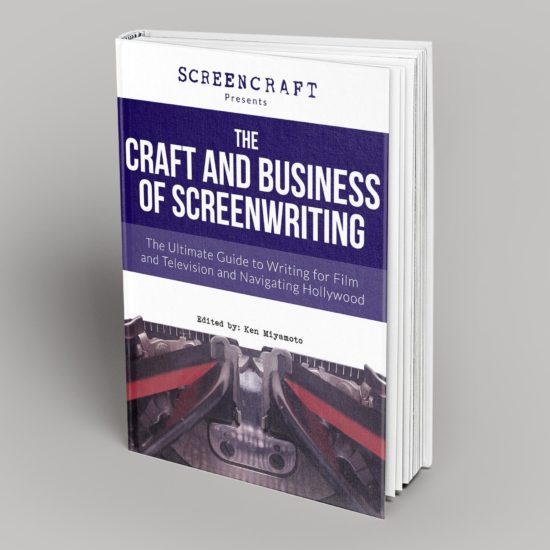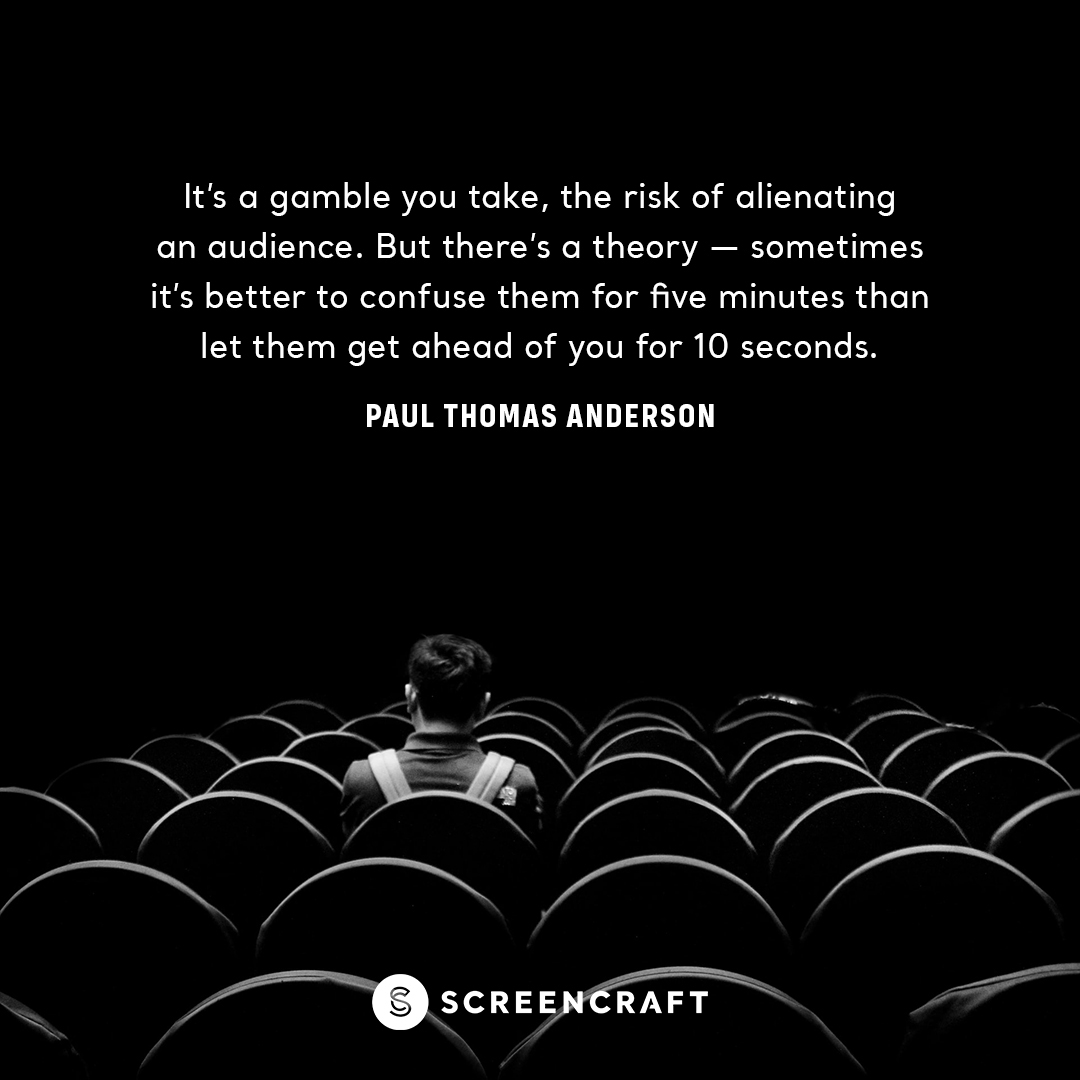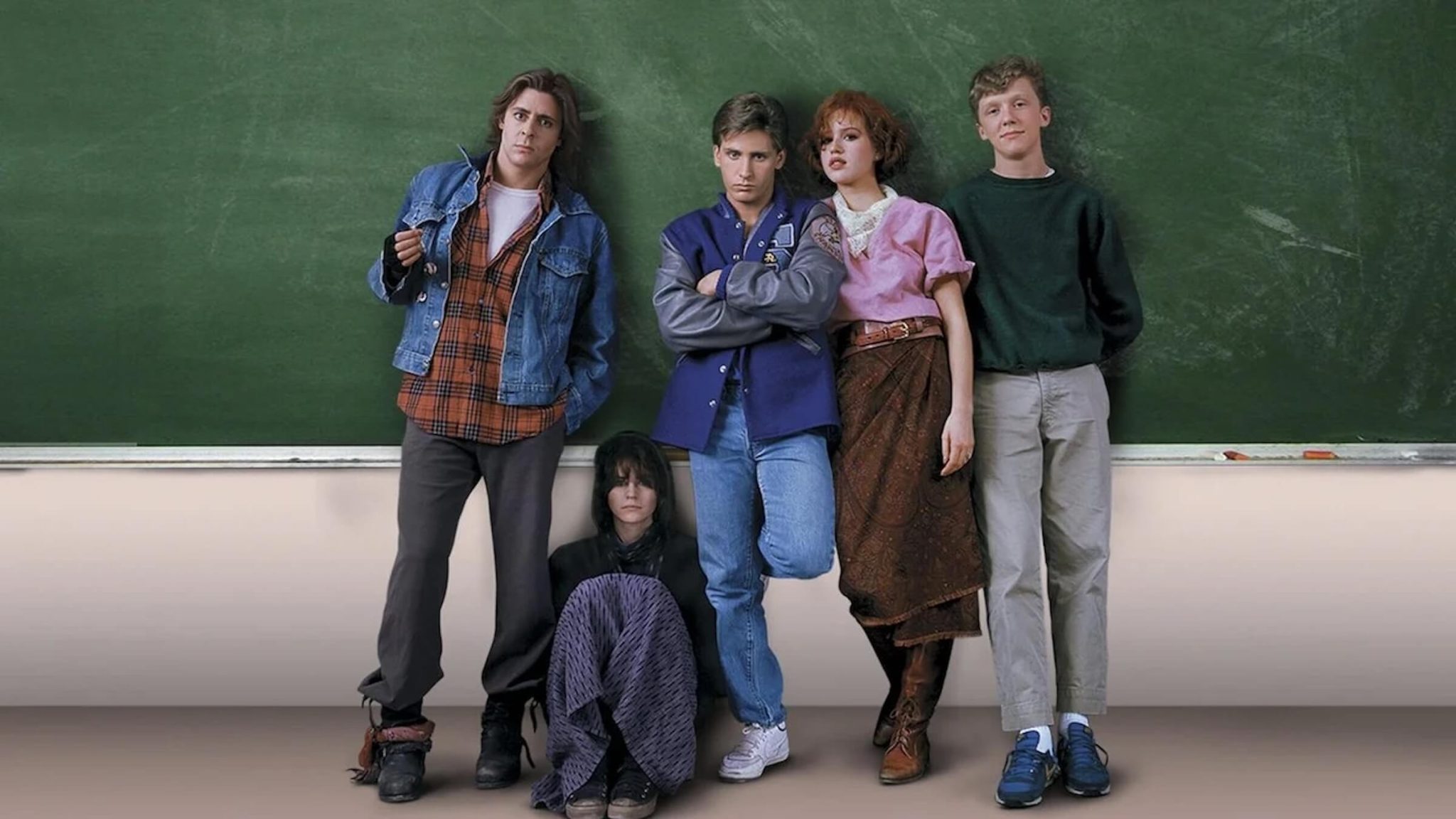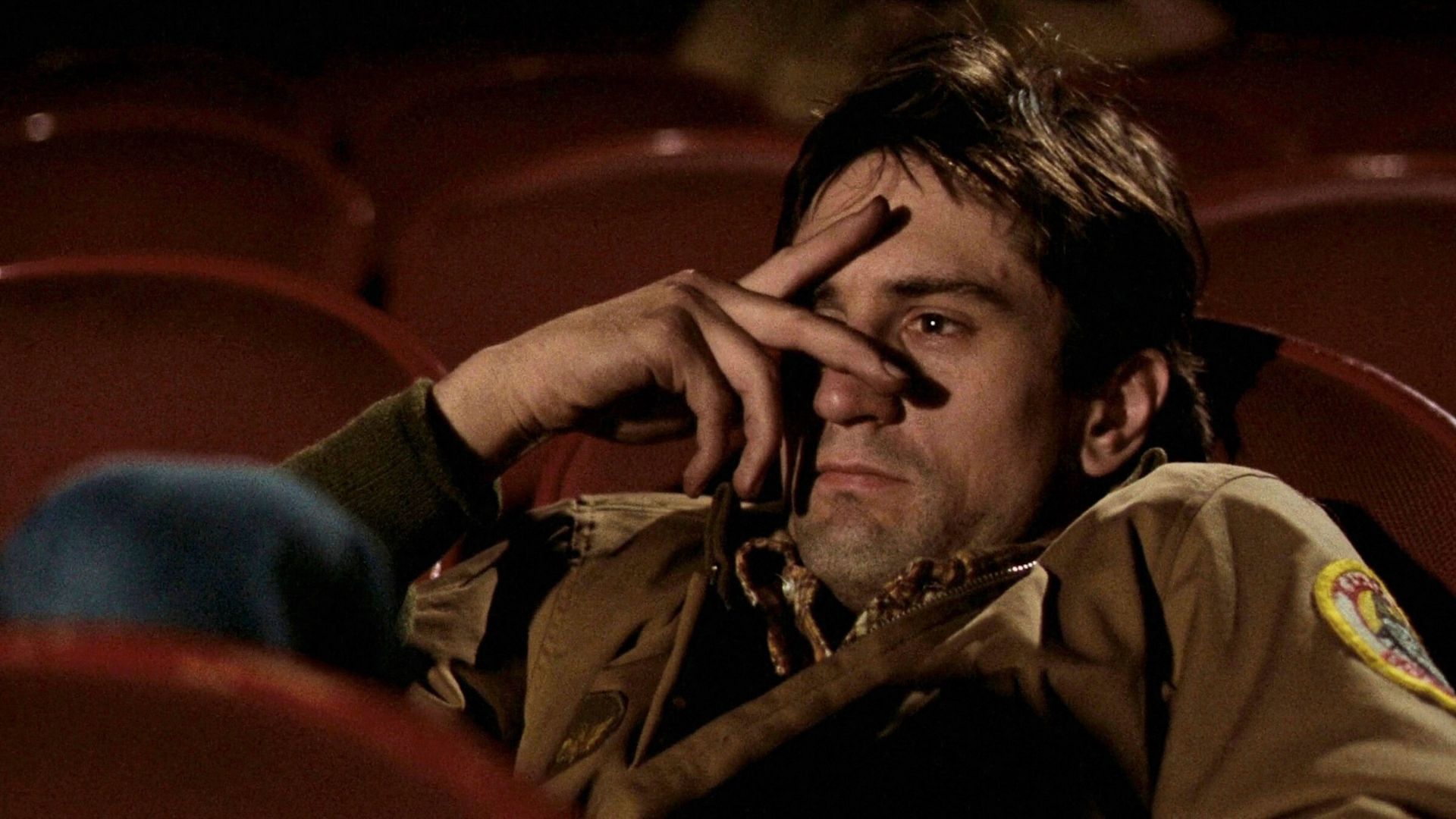
Beyond the grammar, homophone, and spell check tests that writers love so much (enter sarcasm), are there tests that you can run your screenplays through to see if they are ready in regards to story, characterization, dialogue, structure, pacing, and any other vital elements that it will be judged upon?
Here we offer five simple tests that can help screenwriters determine if their screenplays are ready for the big league.
1. Before You Write Your Script, Field Test the Concept
Choosing concepts to take to script is something that must be handled wisely. Some ideas are nothing more than gimmicks. Others are our own versions of successful box office hits.
When you are choosing your next project, you are making decisions that will affect the next several months of your life. Thus, you want to ensure that what you decide on developing and writing is something that is going to give you the highest odds of success in the end. Sure, that quirky concept or passion project every screenwriter has floating around in their head needs to be written, but screenwriters also need to face the reality that amongst your stack of spec scripts, you need some true gems that are the perfect hybrid of what you want to write and what Hollywood wants to buy.
Whether it's a high concept treasure of a script or an unusual and unique black sheep that stands out from the rest, it's always good to field test the concept before you start writing it.
Come up with an elevator pitch for any concept you have in mind — which consists of a logline and some additional story points that cover the general beginning, middle, and end — and then share that with ten people.
Those ten people should be a mixture of family, friends, co-workers, and peers.
As you pitch the project, pay specific attention to their reactions. Are they excited about the concept? Do they ask some excited questions about it?
Gauge their responses and see how many are genuinely excited or just politely listening and nodding their heads. And in that respect, be honest with yourself and know the difference between someone that is truly engaged with your concept versus someone that is just trying to spare your feelings.
If a majority of the people are not overly engaged or excited by your pitch, maybe there's something better to conjure and pursue.
These people represent not just the possible audience watching your movie, but also the Hollywood insiders you may market the eventual script to. Field testing — also known as market research — can be a beneficial guide to many screenwriters trying to choose their next project.
2. Hide Your Character Names and Read the Dialogue
Characterization is a vital component of every screenplay. When your script has high characterization marks, as far as presenting characters with depth and unique voices, readers and audiences alike will be more engaged with the story that they are placed within.
That said, one of the most common mistakes screenwriters make is writing characters that are either one-dimensional or those that all sound and act the same.
Giving your characters a particular ethnicity, accent, or physical look does not equate to excellent characterization. We need to see different characters have different actions and reactions, both physical and emotional, to any given situation they are put in within the conflict of the story that is presented. Different characters need to have different philosophies, backgrounds, intents, and goals as well.
One of the easiest tests that you can run your script through to detect poor or outstanding characterization is hiding character names as you read through all of the dialogue within your script. Whether you use software to do this or use your finger to cover the names as you page through the script, this can often be an eye-opening experience for the characterization of your screenplay.
If you can't tell the difference between characters and their dialogue, you need to rewrite them in a way that better differentiates each of them.
Some characters talk less and take more action. Others talk more and take less action. Some get lost in their emotions and struggle to find the words. Others are articulate and try to convey strength through well thought out conversation points.
Dialogue is often used poorly in screenplays. Screenwriters make the mistake of using dialogue as a tool to relay information rather than reveal characterization.
Read through your script's dialogue as you cover the names of your characters to see if your script is lacking in unique and original characterization.
3. Read Only the Dialogue in Your Script and See if It Tells the Story
As we mentioned before, many screenwriters make the mistake of using dialogue to relay information. The worst kind of dialogue is present in the form of lousy exposition that shares information the characters already know to inform the reader or audience of what is going on in the story.
A simple test to tell if your dialogue is guilty of this is to read your screenplay from beginning to end — while only reading the dialogue alone. No scene description.
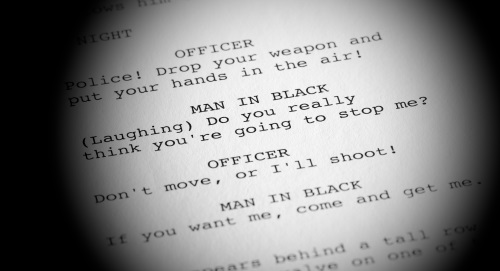
If you can follow the story of the whole script based off of the dialogue alone, you have a significant issue that you have to deal with before sending the script to anyone.
4. When Reading Your Script, Do Your Eyes Flow Down the Page?
This is an old, unique, and very helpful test that you can run your screenplay through.
As you read your screenplay, do your eyes flow down the page or do you find them reading from left to right? If your eyes are scanning from left to right as you read each line of scene description and dialogue, your script is likely overwritten — you're bored. If your eyes are flowing down the page while still being able to capture that scene description and dialogue information, the script is doing well.
White space in screenplays is very important. Screenwriters are tasked with communicating visuals to the reader in a way that allows the reader the chance to visualize what they are supposed to see within their own mind's eye as quickly as possible.
Read ScreenCraft's How White Space Makes Your Screenplays Better!
Film and television are visual mediums. You're not writing a detailed novel. Instead, you're communicating a visual that needs to be processed quickly as you then move onto the next, and the next, and the next — no different than running reels of film composed of single frames that create a moving picture. In that analogy, the scene description of one single visual in a screenplay is equal to the single frame of a still image. As you add more scene description of additional visuals, the reader begins to see your visual screenplay come to life in their own mind's eye, much like that reel of film being played on the big screen.

When you have overwritten the scene description, it takes much longer for the reader to interpret it — they have to read from left to right as they read each line of detail. The script isn't flowing.
When you use just one to two sentences or fragments of description per image — and then leave the details to their own imagination — the script begins to flow as the reader's eyes begin to flow down the page.
If your script reads like a book (eyes moving from left to right), cut the scene description down so it reads like a reel of film presenting quick, fast, and multiple frames of images.
5. The Bechdel Test
We now live and work in a long overdue evolving Hollywood where women are playing a much bigger part in nearly every aspect. There are more female movie and television stars, agents, managers, development executives, writers, producers, and directors than we've ever seen. It's amazing. But there's still work to be done — specifically regarding female characters and how they are portrayed.
The Bechdel Test is a method for evaluating the portrayal of women in fiction, asking whether a work features at least two women who talk to each other about something other than a man. The test is used as an indicator for the active presence of women in film and television (and literary fiction) and calls to attention the gender inequality present within any specific screenplay.
Development executives, managers, and agents use the Bechdel Test to ensure that this continued progression towards gender equality — in this case specifically to the characters present within a screenplay — is present in the applicable screenplays under consideration in Hollywood.
Not all screenplays have to pass this test — some are indeed examples of stories that have only minor supporting roles for female characters. Others have no female characters at all (which can always be changed with a good rewrite where appropriate, mind you). But for any screenplay that has two or more female characters that play a primary role in the story, they should have their own character moments and arcs that don't directly hinge on male characters and their storylines.
To pass this test, your screenplay has to satisfy the following three requirements:
- The movie has to have at least two women in it,
- who talk to each other,
- about something besides a man.
The female characters have to have a character name attached to them, mind you. Hence, the characters in question have to be bigger than minor supporting roles.
These five tests are meant as offered tools that screenwriters can take advantage of to better their screenplays. There are undoubtedly many more that your scripts can be put through. What did we miss?
Ken Miyamoto has worked in the film industry for nearly two decades, most notably as a studio liaison for Sony Studios and then as a script reader and story analyst for Sony Pictures.
He has many studio meetings under his belt as a produced screenwriter, meeting with the likes of Sony, Dreamworks, Universal, Disney, Warner Brothers, as well as many production and management companies. He has had a previous development deal with Lionsgate, as well as multiple writing assignments, including the produced miniseries Blackout, starring Anne Heche, Sean Patrick Flanery, Billy Zane, James Brolin, Haylie Duff, Brian Bloom, Eric La Salle, and Bruce Boxleitner. Follow Ken on Twitter @KenMovies
For all the latest ScreenCraft news and updates, follow us on Twitter, Facebook, and Instagram.
Get Our Screenwriting Newsletter!
Get weekly writing inspiration delivered to your inbox - including industry news, popular articles, and more!





